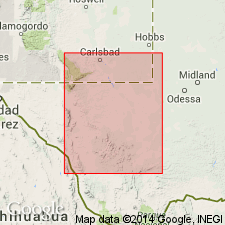
- Usage in publication:
-
- Wolfcamp series
- Modifications:
-
- Principal reference
- Revised
- AAPG geologic province:
-
- Permian basin
Summary:
Pg. 1674-1675, 1677. Permian system divided into four divisions of series rank. Wolfcamp is first and lowest of these divisions. Comprises beds that have been referred to as Wolfcamp formation (restricted), which is thus raised to series rank. In Glass Mountains, series consists of about 600 feet of limestone, limestone conglomerates, and shales. In West Texas, Wolfcamp rests with angular unconformity on rocks ranging in age from Precambrian to upper Pennsylvanian and is unconformably overlain by Leonard series. Characterized by fusulind genera SCHWAGERINA s. s., PSEUDOSCHWAGERINA, and PARASCHWAGERINA. Wolfcamp equivalents include Hueco formation (restricted) of Diablo Plateau and Abo formation of New Mexico. Series in northern Oklahoma, Kansas, and Nebraska includes beds from disconformity above Brownville limestone up to horizon near top of Herington limestone. Recommended that in Oklahoma term Wanette be dropped in favor of Wolfcamp series.
Source: US geologic names lexicon (USGS Bull. 1200, p. 4278-4280).
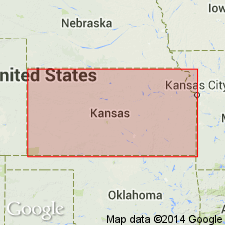
- Usage in publication:
-
- Wolfcampian series*
- Modifications:
-
- Overview
Summary:
Pg. 41. Wolfcampian series, formerly called Big Blue series, contains older Permian rocks of Kansas. Outcrop thickness in Kansas about 785 feet.
Source: US geologic names lexicon (USGS Bull. 1200, p. 4278-4280).
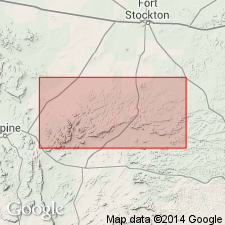
- Usage in publication:
-
- Wolfcamp series*
- Modifications:
-
- Overview
- AAPG geologic province:
-
- Permian basin
Summary:
Pg. 299-311. Wolfcamp series in Glass Mountains, [Brewster County], western Texas, is represented by sequence of diverse lithologies and includes regional unconformity. Detailed study reveals that two formations can be recognized in field and that both units are within "zone of PSEUDOSCHWAGERINA." Each formation has characteristic fusulinid fauna. Nealranch [Neal Ranch] formation (new) embraces upper part of beds originally called Wolfcamp by Udden (1917) in Wolf Camp Hills and is renamed to retain this widely used name for time-stratigraphic unit, Wolfcamp series. Lenoxhills [Lenox Hills] formation (new) unconformably overlies Nealranch formation and is upper formation of Wolfcamp series in Glass Mountains. It was in part included in Wolfcamp formation of King (Univ. Texas Bull., no. 3080, 1931) where it crops out in western Glass Mountains and is now known to be present across southern escarpment of eastern Glass Mountains, and is lower 200 to 300 feet of Hess formation of Udden (1917). Exact placement of top of Pennsylvanian system in Glass Mountains has long been major controversy. Fusulinid faunas of Cisco (Virgil) age are known from strata as high as "grey limestone" of King (1931 and 1937). In Wolf Camp Hills, the Nealranch (300 to 470 feet thick unconformably) overlies the ''grey limestone" and contains oldest SCWAGERINA and PSEUDOSCHWAGERINA faunas thus far discovered in Glass Mountains. Boundary between Permian and Pennsylvanian systems is taken at this unconformity. The "grey limestone" of King (1931) contains youngest Pennsylvanian fauna in Wolf Camp Hills and includes TRITICITES COMPTUS n. sp., T. VENTRICOSIS (Moller), T. PINGUIS Dunbar and Skinner, and T. KOSCHMANNI Skinner.
Source: US geologic names lexicon (USGS Bull. 1200, p. 4278-4280).
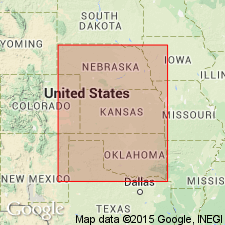
- Usage in publication:
-
- Wolfcampian
- Wolfcamp
- Modifications:
-
- Not used
Summary:
Pg. 229-235. Name Lyon series (Lyonian epoch) proposed for American standard early Permian(?) rocks. Kansas section of rocks of Sakmarian age is complete and well exposed over wide and accessible area, including parts of Oklahoma and Nebraska. Name Wolfcamp and time term Wolfcampian should not be used in Kansas, Oklahoma, and Nebraska.
Source: US geologic names lexicon (USGS Bull. 1200, p. 4278-4280).
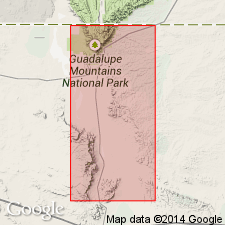
- Usage in publication:
-
- Wolfcamp series*
- Modifications:
-
- Overview
Summary:
Pg. 1578-1579. The USGS recognizes two-fold subdivision of Permian system and period. The divisions (Lower and Upper series and Early and Late Epochs) coincide as nearly as possible with those recognized in type Permian and are drawn according to existing concepts of biotic correlation with type sequence. Reference sequence of United States is Permian outcrops of northwestern Trans-Pecos Texas (Delaware Mountains, Guadalupe Mountains, and Sierra Diablo Mountains) where approximate faunal boundary is taken as that between Cherry Canyon and Bell Canyon formations which are encompassed by Guadalupe provincial series. Boundary falls between Word and Capitan formations as recognized in Glass Mountains area. West Texas provincial series, Wolfcamp, Leonard, Guadalupe, and Ochoa, are retained according to current usage.
Source: US geologic names lexicon (USGS Bull. 1200, p. 4278-4280).
For more information, please contact Nancy Stamm, Geologic Names Committee Secretary.
Asterisk (*) indicates published by U.S. Geological Survey authors.
"No current usage" (†) implies that a name has been abandoned or has fallen into disuse. Former usage and, if known, replacement name given in parentheses ( ).
Slash (/) indicates name conflicts with nomenclatural guidelines (CSN, 1933; ACSN, 1961, 1970; NACSN, 1983, 2005, 2021). May be explained within brackets ([ ]).

